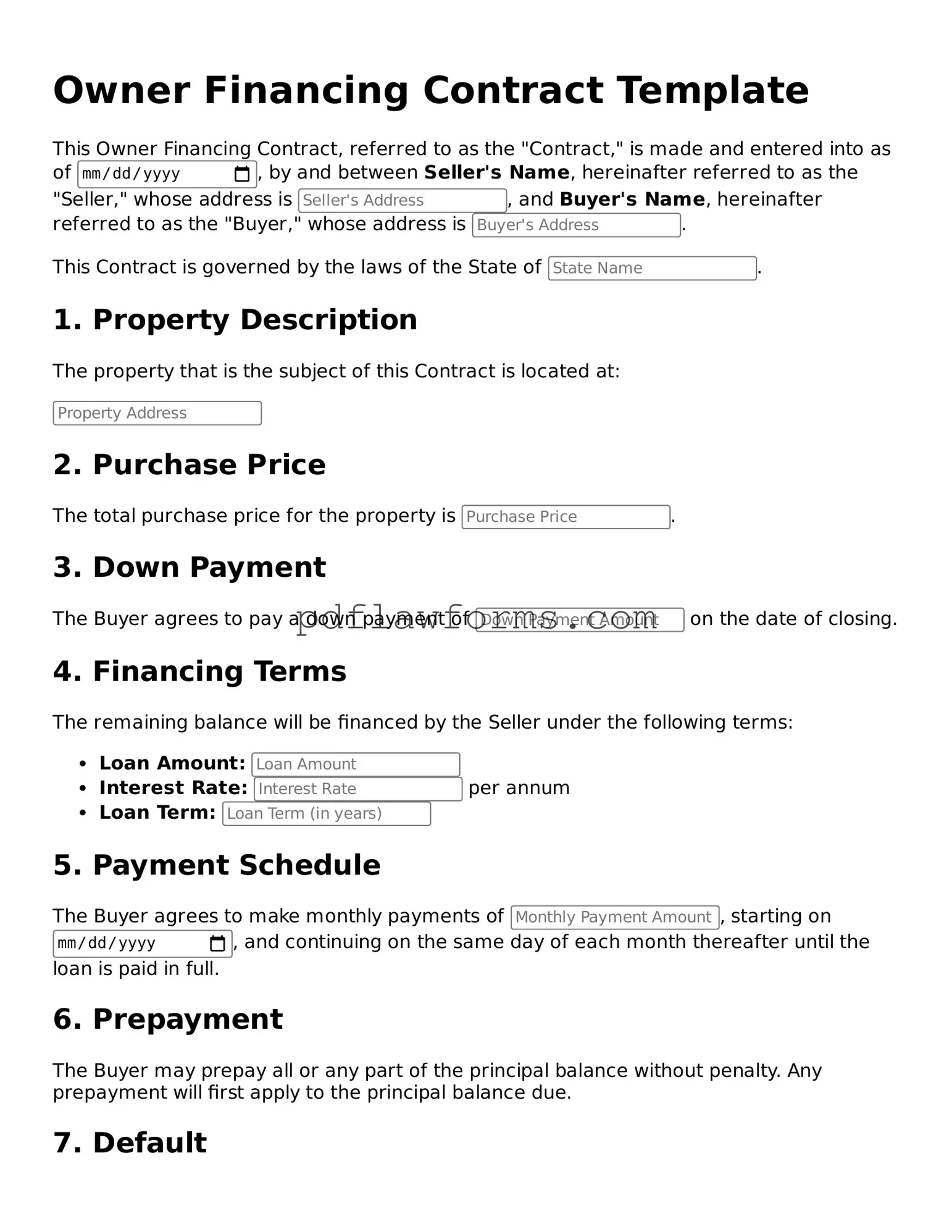When filling out an Owner Financing Contract form, many individuals make common mistakes that can lead to complications down the line. One frequent error is not clearly identifying the parties involved. Make sure to include the full names and addresses of both the buyer and the seller. This clarity helps prevent disputes and ensures that all parties are correctly represented.
Another mistake is failing to specify the purchase price. This figure should be clearly stated to avoid any confusion. If the price is left ambiguous, it can lead to misunderstandings later. Always double-check that the amount is accurate and reflects the agreed-upon terms.
People often overlook the importance of detailing the payment terms. Specify the interest rate, payment schedule, and the total number of payments. Without this information, the contract may lack the necessary structure, leading to potential financial disputes in the future.
Additionally, some individuals neglect to include contingencies. Contingencies are conditions that must be met for the contract to remain valid. For instance, if the buyer needs to secure financing or conduct inspections, these should be clearly outlined in the contract to protect all parties involved.
Another common mistake is not addressing the issue of default. It’s crucial to specify what happens if either party fails to meet their obligations. Including clear terms regarding default can save time and legal trouble later on.
Many people also forget to include a clause for property taxes and insurance. Clarifying who is responsible for these costs can prevent disputes. Make sure to outline whether the seller or buyer will handle these expenses during the financing period.
Some individuals may not seek legal advice before signing the contract. Consulting a legal professional can provide valuable insights and help identify potential issues before they arise. This step can be crucial in ensuring that the contract is fair and legally sound.
Lastly, failing to keep copies of the signed contract is a mistake that can lead to complications. Always retain a copy for your records. This ensures that you have access to the agreed-upon terms should any disputes arise in the future.
